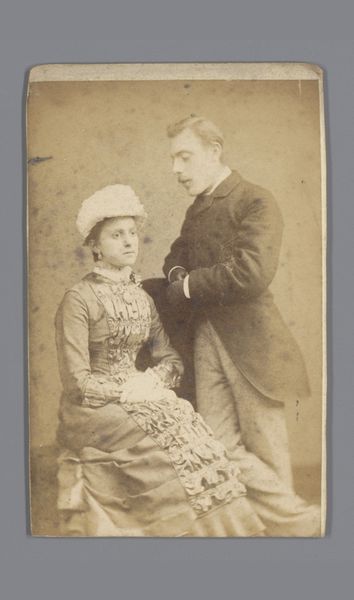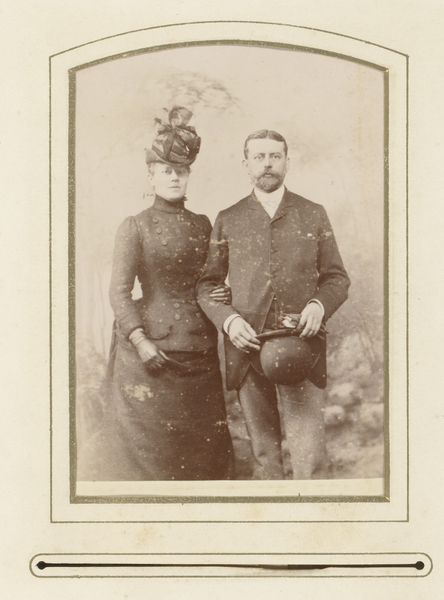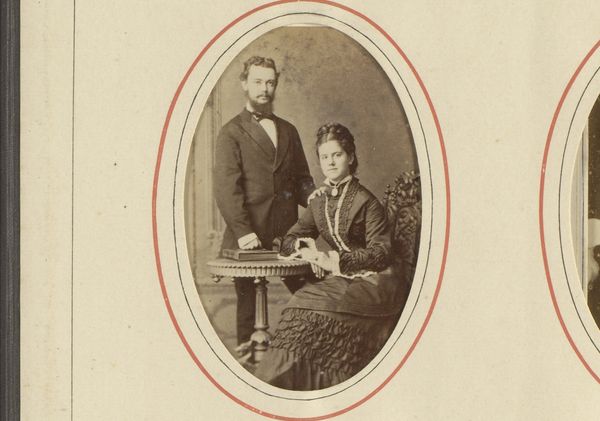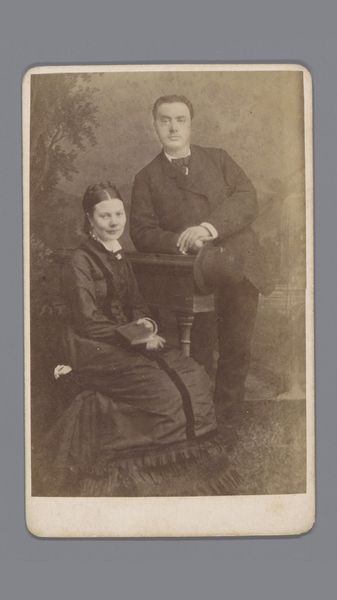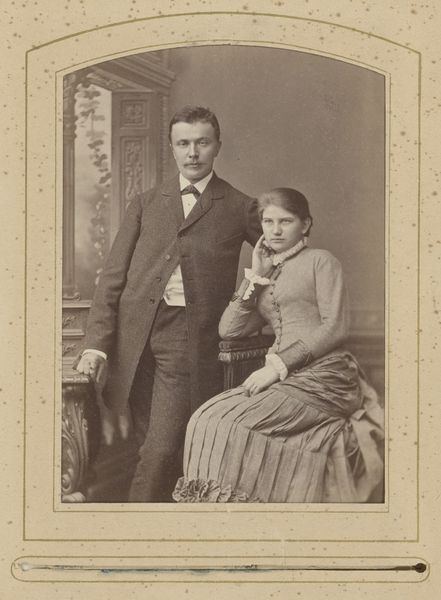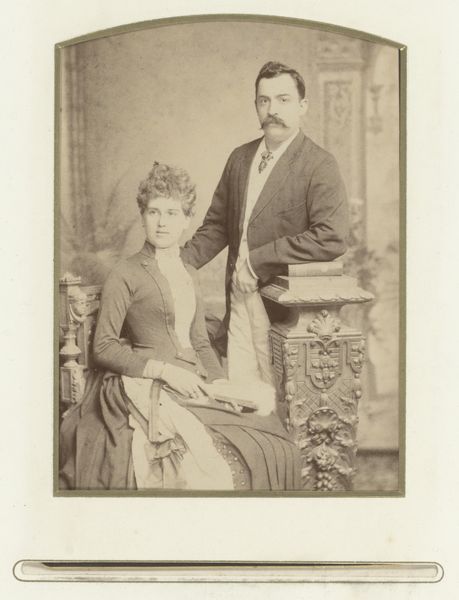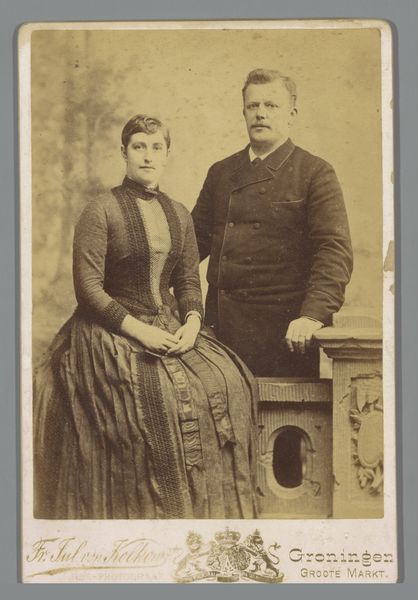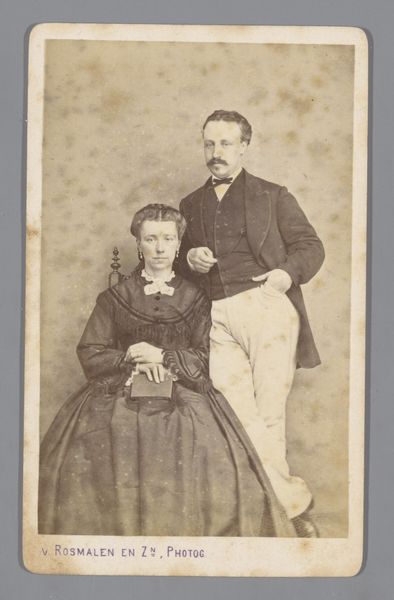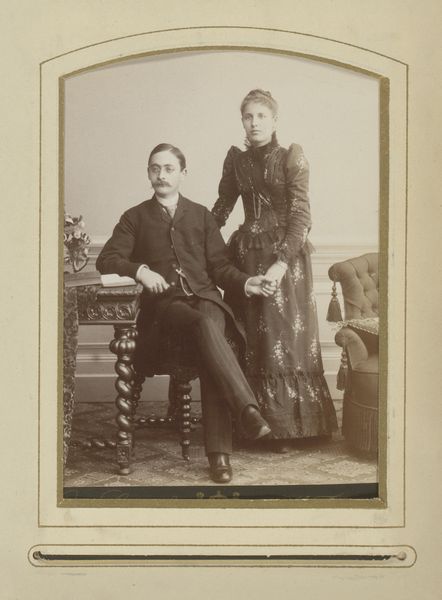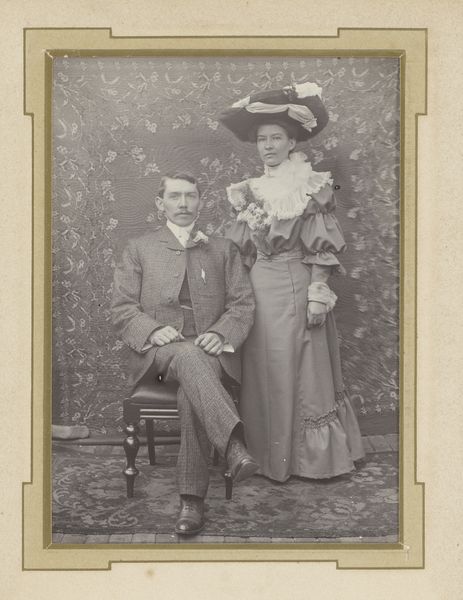
photography, gelatin-silver-print
#
portrait
#
16_19th-century
#
archive photography
#
photography
#
historical fashion
#
gelatin-silver-print
#
19th century
Dimensions: height 104 mm, width 65 mm
Copyright: Rijks Museum: Open Domain
Curator: Before us is a gelatin-silver print entitled "Portret van een onbekende man en vrouw," taken sometime between 1886 and 1906 by Max Büttinghausen. Editor: What strikes me is their stillness, an almost somber air. The woman's gaze seems averted, lost in thought. It is intriguing. Curator: This particular photographic technique, the gelatin-silver print, became quite common for commercial portraiture in the late 19th century due to its relative ease of production and sharp detail. These portraits were more accessible to a growing middle class, a departure from the painted portraits only available to the elite previously. Editor: Indeed, the symbolism of their attire contributes greatly. The woman’s high-necked dress and the man's formal suit—visual indicators of respectability, their aspirations meticulously woven into cloth. Consider the symbolic weight that clothing held then, signifying identity and social standing. Curator: Precisely. The material itself— the probable wool and cotton, now preserved through the gelatin silver process— speaks to the industry supporting portraiture. Each item consumed would involve different globalized economies of that time. It raises questions of access and the economics of photography. Editor: Absolutely. Notice, too, the studio setting; though minimal, it alludes to aspirations of grandeur, subtly embedding the sitters in an ideal they hope to inhabit, perpetuating idealized archetypes. Curator: It does also give context to the economic structures of Amsterdam as a center for photographers, such as Max Büttinghausen, catering to this growing middle class that aspired towards such visual representations of status. Editor: Seeing how their garments served as visual scripts to be interpreted offers insight into their worldview. How they wished to be seen by others and how this small image encapsulated their cultural narrative. Curator: It makes you think of all the layers contained within a photograph - how social conditions affect the material process of creating art. Editor: It certainly does reveal how imagery can become powerful vessels of shared history and meaning. A photograph holds worlds.
Comments
No comments
Be the first to comment and join the conversation on the ultimate creative platform.


